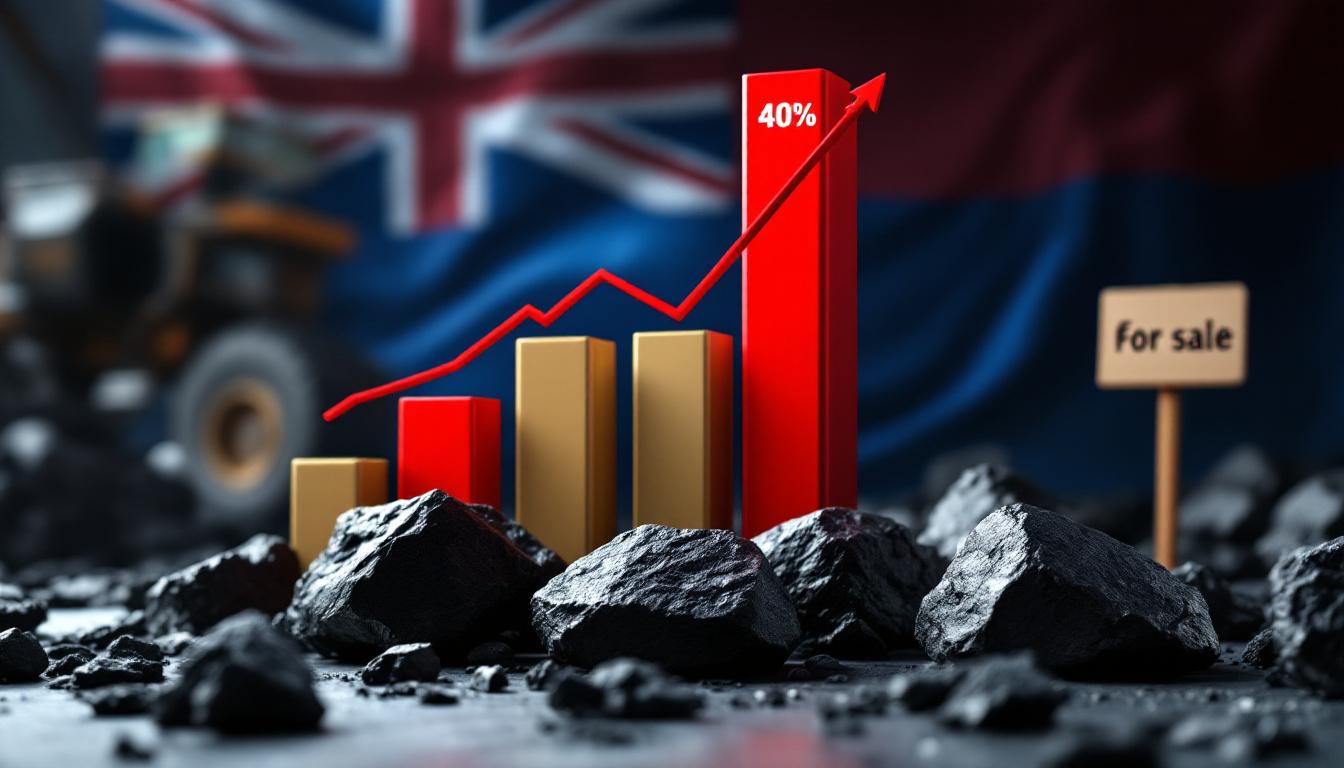How Are China's Zinc and Lead Markets Performing in 2025?
China's zinc and lead markets are experiencing significant shifts as we move through July 2025, with treatment charges, inventory levels, and production dynamics creating a complex landscape for industry participants. The latest market data reveals important developments that stakeholders should closely monitor to navigate this evolving environment.
Current Market Indicators Reveal Divergent Paths
The latest figures from Shanghai Metals Market (SMM) show the imported zinc concentrate index has reached $66.25/dmt, representing a notable 1.53% increase week-over-week. Meanwhile, imported lead concentrate spot treatment charges have remained stable at $-55/dmt, indicating different supply-demand dynamics between these two metals.
Social inventories tell an important story about market conditions, with zinc social inventory increasing to 82.4 kt (up 1.8 kt from the previous week) while lead social inventory saw a smaller rise to 56.9 kt (up 0.6 kt). These inventory movements reflect the current consumption patterns and production realities facing both metals.
Port inventories further illuminate the supply situation, with zinc concentrate port inventory reaching 334 kt (a modest 0.9 kt weekly increase) and lead concentrate port inventory holding steady at 17 kt. Notably, the lead concentrate inventory now includes a new sampling point at Nanjing port, which accounts for 10 kt of the total.
What's Happening in the Spot Market for Zinc Concentrates?
Despite improved treatment charges, Chinese smelters are displaying remarkable caution in their purchasing strategies. With raw material inventory at domestic zinc smelters reaching approximately 30 days of supply, many are deliberately holding back from the spot market in anticipation of further TC increases.
"Trading activity in the spot market has been notably subdued due to the arrival of long-term contracted concentrates and sufficient inventory levels at smelters," notes SMM's latest market report.
Recent transactions highlight current market conditions. Trafigura's Bisha zinc concentrate saw a significant deal of 10,000 tonnes at $70/dmt ex-port, with the gold content being priced separately. Meanwhile, Ozernoye concentrate is under negotiation with expected treatment charges of approximately $100/dmt (equivalent to RMB 4,100/mt) after import.
Ozernoye Concentrate Faces Acceptance Challenges
The Ozernoye zinc concentrate presents a particular case study in how quality affects marketability. This material faces several significant processing hurdles in the Chinese market:
- Higher reagent requirements increasing processing costs
- Environmental compliance risks due to impurity content
- Quality challenges with elevated lead levels (4-5%) and other impurities
- Typical zinc content of only 41-42%
These factors significantly limit its acceptance, often requiring blending with cleaner concentrates to make it suitable for processing. This situation demonstrates how concentrate quality directly impacts pricing and market accessibility.
How Are Major Mining Operations Impacting Supply?
Huoshaoyun Mine: A Critical Domestic Producer
The Huoshaoyun operation represents one of China's most significant domestic zinc and lead projects, with both mining and smelting components affecting market supply.
Recent production data shows the mine operated at approximately 50kt of mined ore in both May and June 2025. Looking ahead, the operation has ambitious targets for Q3, aiming for 400kt total ore production between July and September, with July expected to deliver 150kt of this total.
"Mining is expected to pause mid-September for seasonal reasons," according to SMM's project update on Huoshaoyun.
For the full year 2025, Huoshaoyun is targeting 700-750kt of production, including carryover stock. The mine is currently shipping concentrates with impressive specifications of >30% zinc and >6% lead grades, though these materials do contain high silicon and iron content that can create processing challenges.
Smelting Timeline Introduces New Capacity
The smelting component of the Huoshaoyun project marks an important addition to China's domestic refining capacity. The smelter was successfully ignited on July 1, 2025, with ore feeding targeted to begin by mid-July (10-15).
The first zinc ingots from this new operation are expected by late August or early September, with production for 2025 pending a mandatory safety inspection in September. The operation has provided guidance of 50kt zinc production for 2025, representing significant new domestic supply.
Lead production at the facility will begin only after zinc slag becomes available, with annual lead output projected at approximately 10kt. This material is expected to be distributed primarily to Southwest China rather than the eastern markets.
Global Production Updates Affecting Chinese Markets
International production developments continue to influence China demand trends. Nexa Resources' Cajamarquilla smelter in Peru has fully resumed operations as of June 30, 2025, following a three-day labor suspension that was resolved through successful negotiations.
Meanwhile, Hindustan Zinc in India reported its Q1 FY2026 performance with record Q1 mining output of 265kt (lead and zinc combined), representing a 1% year-over-year increase. However, their refined metals production reached 250kt, down 5% year-over-year and 7% quarter-over-quarter, with the decline attributed to scheduled plant maintenance.
Hindustan Zinc's alloy subsidiary achieved record quarterly output of 5.1kt, demonstrating strength in value-added production despite maintenance-related challenges in primary metal output.
What Do Inventory Levels Reveal About Market Direction?
Zinc Inventory Analysis and Forecasting
The zinc market is showing clear signs of supply-demand imbalance as inventories continue to rise. Port inventory has increased slightly to 334kt (up 0.9kt week-over-week), while social inventory has risen more significantly to 82.4kt (up 1.8kt).
This inventory accumulation stems from sluggish consumption and a slowing restocking pace among downstream users. According to SMM analysis, this trend is expected to continue through July:
"Zinc social inventory is expected to continue accumulating due to the ongoing supply-demand imbalance in the market."
The persistent inventory growth suggests that supply currently exceeds consumption requirements, creating potential pressure on prices if this trend continues through the third quarter.
Lead Market Inventory Dynamics
The lead market presents a somewhat different picture, with port inventory remaining stable at 17kt across six key ports. This figure now includes Nanjing port, newly added to the sampling with 10kt of inventory.
Social inventory of lead has increased slightly to 56.9kt (up 0.6kt week-over-week), reflecting modest inventory growth. Market behavior shows increased selling interest driven by higher lead prices, while downstream buyers maintain just-in-time purchasing strategies to minimize inventory costs.
Unlike zinc, lead inventory is expected to remain relatively stable rather than significantly increase through July, as smelter maintenance periods conclude and consumption shows modest improvement. This stability suggests a more balanced supply-demand relationship in the lead market compared to zinc.
Why Are Treatment Charges Fluctuating in the Current Market?
Supply-Demand Fundamentals Driving Treatment Charges
The 1.53% increase in zinc concentrate treatment charges to $66.25/dmt reflects changing market dynamics, particularly as Chinese smelters maintain cautious purchasing strategies. With domestic smelter raw material inventories averaging around 30 days, many operations are strategically waiting for potentially better terms before making significant spot purchases.
In contrast, lead concentrate treatment charges have remained flat at $-55/dmt, indicating a different supply-demand balance in the lead concentrate market. The negative treatment charge continues to reflect tight concentrate supply relative to smelting capacity.
Quality Considerations in Treatment Charge Negotiations
Concentrate quality significantly impacts treatment charge negotiations, as demonstrated by the Ozernoye case. With its challenging specifications and processing requirements, Ozernoye concentrate commands a substantially different treatment charge (~$100/dmt) compared to higher-quality materials.
This price differential highlights how quality specifications directly translate to processing costs and environmental compliance considerations. Smelters must carefully evaluate these factors when determining appropriate treatment charges for varying concentrate qualities.
What Production Challenges Are Affecting Market Balance?
Technical and Environmental Factors in Processing
Processing challenges with high-impurity concentrates create significant operational hurdles for smelters. The Ozernoye concentrate exemplifies these challenges, with its high lead content (4-5%) and elevated impurity levels requiring special handling:
- Increased reagent consumption driving up processing costs
- Environmental compliance risks from impurity management
- Blending requirements with cleaner concentrates
- Technical adjustments to smelting parameters
These technical challenges directly impact profitability and operational efficiency, creating a tiered market where high-quality concentrates command premium treatment terms while challenging materials face market resistance.
Labor and Operational Disruptions
Recent events at Nexa Resources' Cajamarquilla smelter demonstrate how labor issues can temporarily impact production. The three-day suspension was successfully resolved through negotiations, allowing operations to fully resume by June 30, 2025.
Similarly, Hindustan Zinc's scheduled maintenance resulted in a 5% year-over-year decline in refined metals production despite record mining output. These examples highlight how operational disruptions—whether planned maintenance or labor disputes—create temporary supply fluctuations that ripple through global markets.
How Will Supply-Demand Balance Evolve Through 2025?
Production Forecast and Capacity Expansion
Huoshaoyun's contribution to domestic zinc and lead supply represents a significant development for China's self-sufficiency. With 50kt of zinc production expected in 2025 and approximately 10kt of lead to follow, this new capacity will help offset import requirements.
The project's aggressive mining targets of 400kt for Q3 and 700-750kt for full-year 2025 demonstrate China's commitment to expanding domestic production. As this and other projects advance, the balance between domestic production and import requirements continues to evolve.
Consumption Trends and Demand Indicators
Current consumption patterns show sluggish demand with a slowing restocking pace among downstream users. This weakness in consumption has contributed to inventory accumulation, particularly for zinc, where social inventory increased by 1.8kt in just one week.
For lead, the market shows more stability, with downstream buyers maintaining just-in-time purchasing strategies that help prevent significant inventory accumulation. The modest 0.6kt weekly increase in lead social inventory reflects this more measured consumption pattern.
FAQ: China's Zinc and Lead Markets
What factors are most influencing zinc and lead prices in 2025?
Supply-side developments, including new domestic production from Huoshaoyun and the resumption of operations at international smelters like Cajamarquilla, are significantly influencing market balance. Simultaneously, sluggish consumption patterns are contributing to inventory accumulation, creating downward price pressure, particularly for zinc.
How do quality specifications affect concentrate marketability?
As demonstrated by the Ozernoye concentrate case, quality specifications dramatically impact marketability. High impurity levels, elevated lead content (4-5%), and processing challenges substantially reduce concentrate acceptance, necessitating price adjustments or blending requirements to make materials viable for processing.
What is the outlook for zinc and lead inventories in Q3 2025?
Zinc inventories are expected to continue accumulating through July due to persistent supply surplus insights and sluggish consumption. In contrast, lead inventories are projected to remain relatively stable as smelter maintenance periods conclude and consumption shows modest improvement, indicating different market dynamics between these metals.
How are global supply chain issues affecting China's metals markets?
Recent events like the three-day labor suspension at Nexa Resources' Cajamarquilla smelter demonstrate how international production disruptions can temporarily impact global supply. Similarly, Hindustan Zinc's maintenance-related production decline highlights how scheduled maintenance affects refined metal availability. These international developments directly influence China's import volumes and market balance.
Market Data: Zinc and Lead Sector Performance July 2025
| Indicator | Current Value | Weekly Change | Market Implication |
|---|---|---|---|
| Zinc Concentrate Index | $66.25/dmt | ↑1.53% | Rising treatment charges indicate improving smelter margins |
| Lead Concentrate TC | $-55/dmt | Unchanged | Persistent negative TC reflects tight concentrate supply |
| Zinc Social Inventory | 82.4 kt | ↑1.8 kt | Accumulating inventory suggests weak consumption |
| Lead Social Inventory | 56.9 kt | ↑0.6 kt | Modest increase indicates more balanced market |
| Zinc Port Inventory | 334 kt | ↑0.9 kt | Slight increase points to adequate import supply |
| Lead Port Inventory | 17 kt | Unchanged | Stable inventory supports steady price environment |
The China zinc and lead market updates continue to follow divergent paths in July 2025, with zinc showing signs of oversupply while lead maintains a more balanced position. As new domestic production comes online and global mining trends evolve, market participants should closely monitor inventory trends and consumption patterns for signs of changing market direction. Additionally, ongoing mining industry innovation and mineral deposit guide assessments will remain critical for understanding long-term supply dynamics in these important metals markets.
Want to Spot Major Mineral Discoveries Before the Market Does?
Discovery Alert's proprietary Discovery IQ model instantly identifies significant ASX mineral discoveries, turning complex mining data into actionable investment insights for both zinc and lead opportunities. Explore how historic discoveries have generated substantial returns by visiting the Discovery Alert discoveries page and gain your market-leading advantage.




